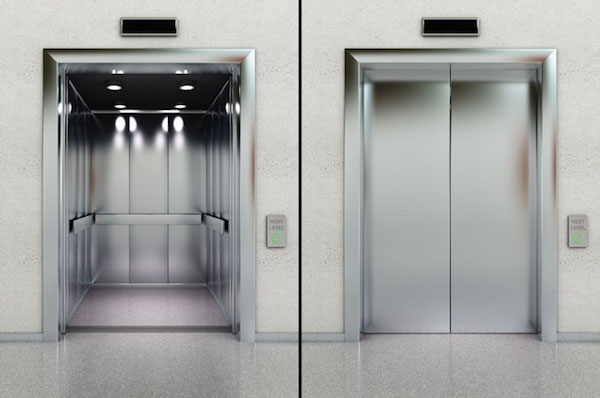

It could be said that the elevator is a vertical transportation system that has been designed to move people from one place to another. Its structure consists of electronic and mechanical parts and these work together to make the elevator a safe means of transportation. In the market there are several alternatives that are not only based on their design but also on their operation, since there are hydraulic and electric elevators. Therefore, in the following post we will explain in detail the differences between these two types of elevators.
The operation of these elevators operatesthrough a hydraulic pump that is assembled to the electric motor. The lift is made by theinjection of oil underpressure, by means of a group of valves from the tank to the piston, thus regulating the speed. It is composed of a cylinder and a piston that supports the cabin. For its part, the motor only comes into operation when it is raised, because to lower it only opens the valve and the cabin lowers through gravity, when the oil pistons are emptied little by little to return to the hydraulic power plant.
A hydraulic elevator does not consume in descent, and is recognized by its practical operation of hydraulic machine, where it increases or decreases by the pressure of the piston. At the moment the cabin goes up it is full of oil, and it expels it at the moment of descent.
These elevators are operated by means of anelectric motor through a pulley through which the cables pass. On one side is the cabin while at the other end is the counterweight, thus leveling the load of the cabin and minimizing the power of the machine, so that the cabin can slide along the guides. In this elevator the motor works in both up and down directions.
The parts that make up the electric elevator are:
One of the most significant differences between the hydraulic orelectric elevator is precisely the drive. It is what has to do with the system that allows the elevator to move and perform its function optimally. In that sense, the hydraulic acts through a pump as its name suggests. The hydraulics is coupled to an electric motor. By means of an injection system it provides oil through the valves that regulate the speed allowing the cabin to move up and down by gravity, while the oil pistons are emptied little by little.
For its part, the electric elevator in the conditioning system depends only exclusively on the electric motor that is activated on the way up as well as on the way down. It works in conjunction with a pulley that is located at the top of the elevator shaft, and the load level is achieved by the position of the cabin on one side and at the other end the counterweight.
This is an aspect in which both hydraulic and electric elevators are efficient enough. It depends to a great extent on the space available to install the cabin. Hydraulic elevators have the unique feature of being able to adapt in a very simple and different way to the spaces, and in many cases even reduce them by relocating the machine room.
Unlike electric elevators, which do not require a system like the hydraulic ones, since their motor is located practically at the top. In addition, this type of elevator requires more additional space to be able to brake and cut speed, which makes it ideal for a multi-storey building. In this aspect has much weight the expert opinion of a professional technician belonging to a recognized company that can indicate which would be the best according to your needs.
Regarding this aspect, in the past there were marked differences between the consumption of a hydraulic and anelectric elevator. However, the opinion that hydraulic elevators use more energy than electric elevators is no longer solid, since with the modernization of some systems such as VVVF functions and power regulation, today it has been possible to considerably reduce the differences between one type of elevator and another. It has been minimized especially in terms of consumption and the noise it makes while in operation.
Las diferencias de los ascensores eléctricos e hidráulicos son bastantes marcadas, cada uno determina ciertos espacios y estructuras en las que debe ser instalado y la comparación entre uno y otro te permitirá conocer bien cuál es el más apropiado según tus necesidades.

En Tecnolift trabajamos cada día con ascensores hidráulicos y eléctricos en diferentes entornos de la provincia de Alicante. Conocemos sus particularidades técnicas, los requisitos normativos que debe cumplir cada instalación y las ventajas que ofrece cada sistema según el tipo de edificio y el uso previsto.
Para nosotros, elegir entre un modelo hidráulico o eléctrico no es una cuestión de moda, sino de encontrar la solución que mejor encaje con las necesidades reales de cada cliente. Nuestro criterio es claro: seguridad, fiabilidad y durabilidad, siempre aplicadas con la seriedad que caracteriza a nuestro equipo.
Elevator installation in Alicante and Murcia.
We offer multiple possibilities for the installation of elevators in buildings without elevators; in stairwells, facades or patios.
Elevators, platforms and stair lifts, loading platforms and dumbwaiters.